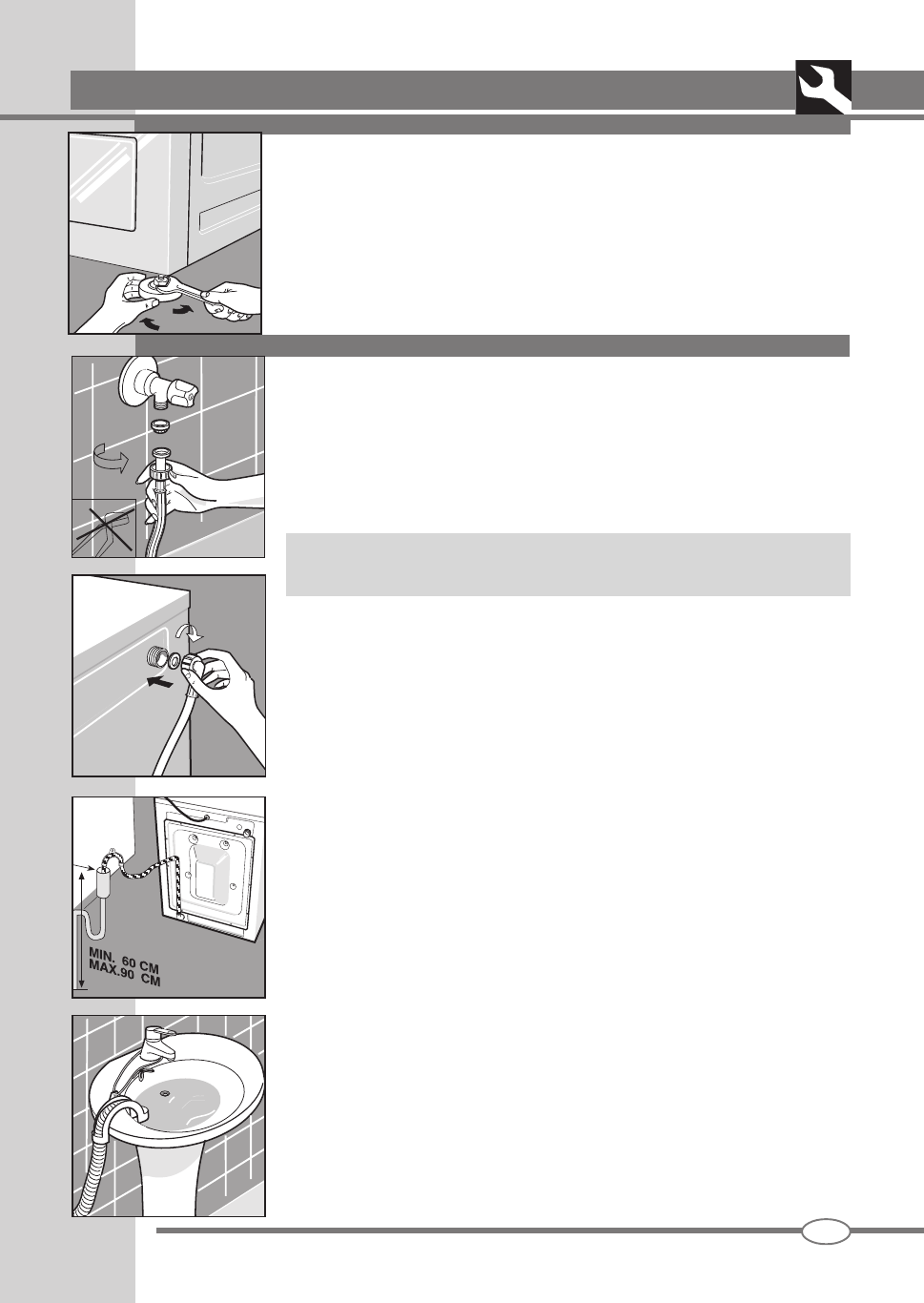
SM1634
17
INSTALLING THE MACHINE
SETTING THE MACHINE LEVEL
After selecting a suitable position, level the machine carefully using the adjustable
feet (Fig. 4). Particular care must be taken when selecting the position, levelling the
washing machine and ensuring the safety of lock nuts.
If levelling is not carried out correctly, the washing machine will be unstable and
noisy during operation, which may result in damage.
If the machine stands on a carpet floor, make sure that air can circulate freely be-
tween the washing machine and the floor itself.
It is not recommended that the machine be installed in locations where the tempera-
ture is liable to drop below freezing.
CONNECTION TO THE WATER SUPPLY SYSTEM
▼ The mains water pressure must be between 0.05 and 1.00 MPa (0.5 - 10 bar.)
▼ Before connecting the water fill hose, open the valve and allow a quantity of
water to flow. This will censure that the supply pipes are free from impurities,
such as sand or rust (this operation is very important when the washing ma-
chine is being connected to a new supply system or if the system has not been
used for a long period of time).
▼ Connect the water fill hose to a 3/4 threaded cold water outlet.
▼ Place the filter washer supplied between the hose and the valve and hand
tighten the connection as much as possible (fig. 5).
▼ Fit the washer on the other end of the supply hose, and screw it onto the
washing machine (fig. 6).
▼ The water supply tap must be fully open when washing.
▼ The water drain hose must be placed at least 60 cm and not more than 90 cm
from the floor (fig. 7).
▼ If the drain hose is connected to a fixed drainage system, the free end must be
inserted in a pipe of minimum internal diameter 40 mm.
▼ The drain hose water connection to the drainage system must not be
hermetically sealed, as this would cause air to accumulate and the water to
siphon out.
▼ If the waste water is to be discharged into a sink or washbasin, insert the hose
in the special bracket supplied and hook it over the edge of the sink or wash-
basin. Then tie the hose and bracket to a tap or similar (fig. 8). To avoid over-
flowing, the sink drain must be clear of obstructions and must be able to empty
quickly.
A
8
7
6
5
4
GB
N.B.: With washing machines which are equipped with a double electro-
valve (for hot and cold water), connect the red tube, to the hot water
tap and the other tube to the cold water tap.


















